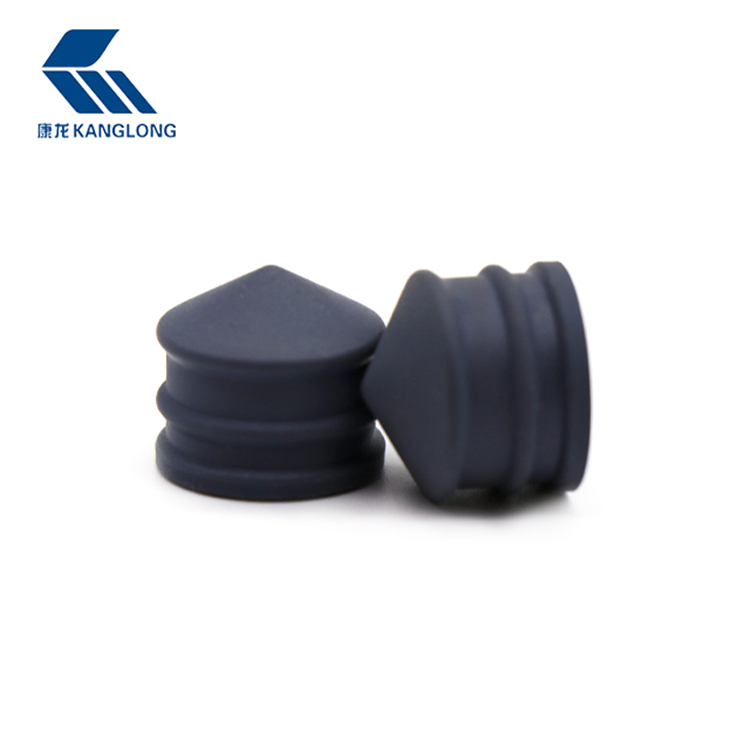A Medical Butyl Rubber Stopper serves multiple essential roles within a prefilled flush syringe. It seals the contents from external contaminants, maintains the sterility of the saline or heparin solution, and allows for smooth operation during administration. The stopper is also in direct contact with the solution for extended periods, which means it must not leach harmful substances or compromise the chemical integrity of the contents.

Given its function, the stopper must exhibit chemical inertness, low permeability, dimensional stability, and biocompatibility. The safety rating of a Medical Butyl Rubber Stopper is a reflection of how well it meets these demanding requirements under various testing conditions.
Key Safety Criteria
The safety rating of a Medical Butyl Rubber Stopper is evaluated across multiple parameters, each of which addresses a specific risk associated with medical packaging. These include:
Chemical Compatibility – The stopper must be chemically inert to prevent interaction with the solution. This includes resistance to acidic or alkaline conditions, and no release of contaminants into the solution.
Extractables and Leachables – This testing identifies substances that might migrate from the rubber into the drug product under storage conditions. The safety rating depends on whether these substances remain within acceptable limits defined by pharmacopeias.
Sterility and Microbial Barrier – A Medical Butyl Rubber Stopper must maintain sterility throughout its shelf life. This involves assessment of its ability to act as a barrier against microorganisms.
Biological Safety – Evaluations such as cytotoxicity, pyrogenicity, and hemocompatibility are conducted to determine whether the material causes adverse biological responses.
Mechanical Integrity – Durability, elasticity, and dimensional stability ensure the stopper performs correctly during storage, transport, and use.
Regulatory Standards Guiding Safety Ratings
A Medical Butyl Rubber Stopper must comply with several international regulatory standards to be deemed safe for use in prefilled flush syringes. The commonly referenced are:
United States Pharmacopeia (USP) <381>, <661>, and <87>/<88> for physicochemical and biological reactivity.
European Pharmacopoeia (EP) 3.2.9 for rubber closures used in pharmaceutical containers.
ISO 10993 for biocompatibility evaluation of medical devices.
These standards provide clear test protocols and acceptance criteria that manufacturers must meet or exceed. Achieving compliance with these guidelines significantly influences the final safety rating of the Medical Butyl Rubber Stopper.
Laboratory Testing and Quality Control
In a typical safety evaluation process, representative samples of the Medical Butyl Rubber Stopper undergo extensive laboratory testing. These tests include:
FTIR (Fourier-Transform Infrared Spectroscopy) to analyze material composition.
GC-MS (Gas Chromatography-Mass Spectrometry) to detect volatile or semi-volatile extractables.
Endotoxin testing to ensure the absence of fever-inducing contaminants.
Accelerated aging tests to simulate long-term storage conditions and evaluate stability.
These tests are performed both on individual stoppers and on samples taken from full-scale production batches to verify consistency.
Cleanroom Production and Sterilization
To support a high safety rating, a Medical Butyl Rubber Stopper must be manufactured in cleanroom environments that meet ISO 7 or better standards. This controls particulate contamination during molding, trimming, washing, and packaging.
After production, the stoppers may be sterilized using methods such as autoclaving or gamma irradiation. Validation of the sterilization process is a critical part of the safety rating, ensuring that the stopper does not degrade under sterilization and maintains its barrier properties.


 English
English Español
Español


.jpg?imageView2/2/w/500/h/500/format/jpg/q/100)






